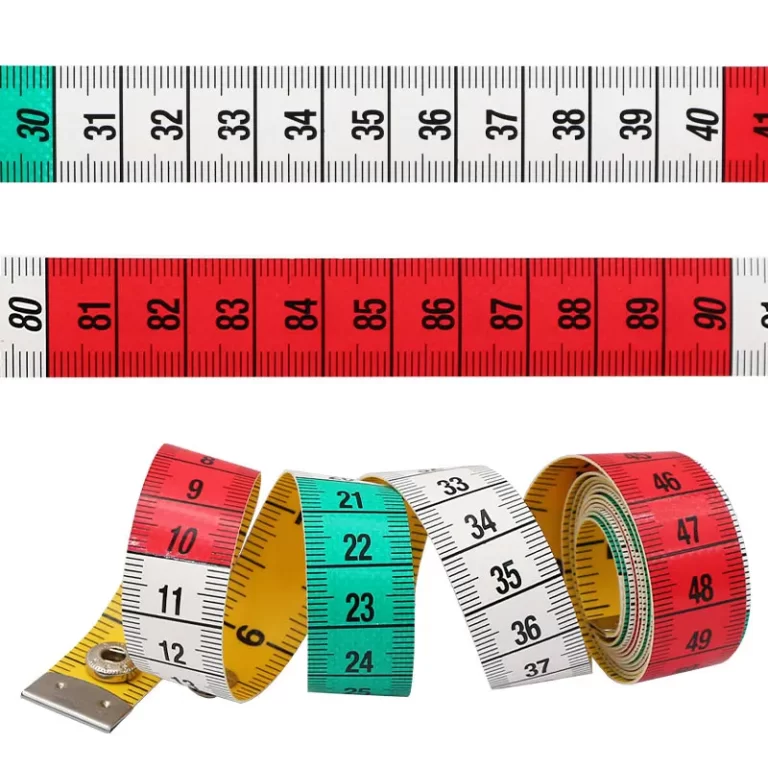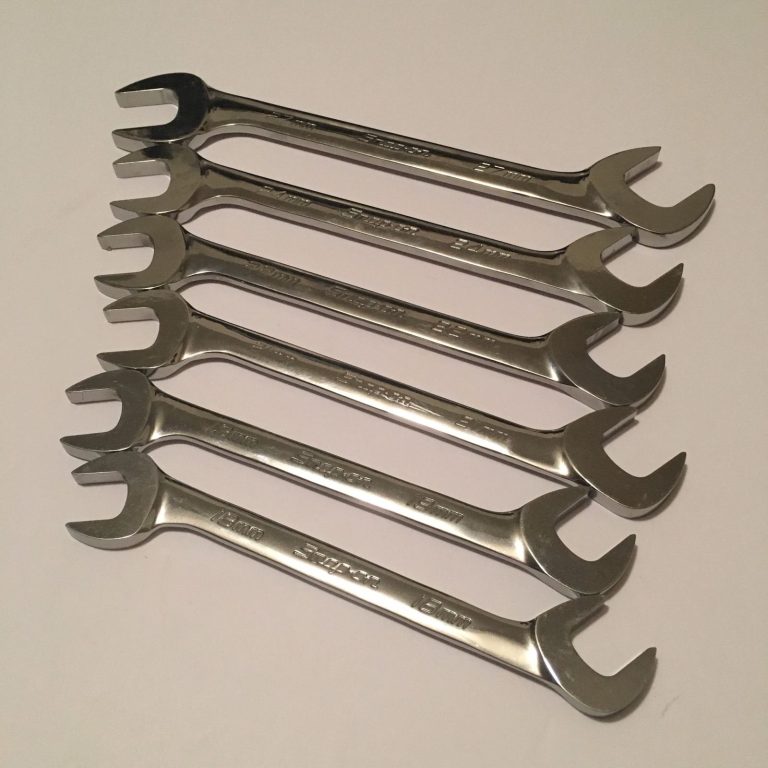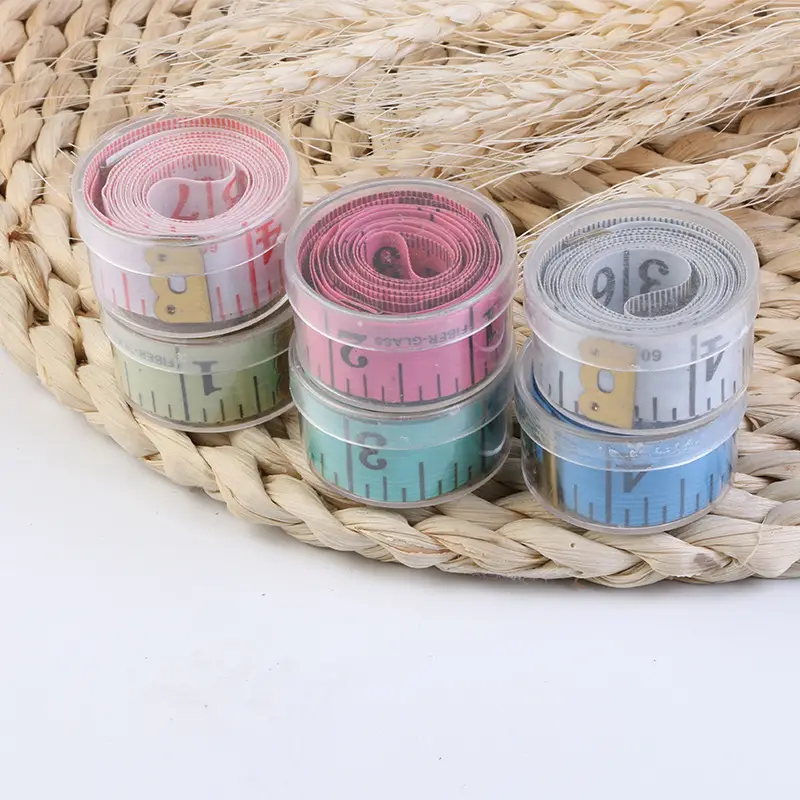
Tape Measure for Sewing: The Right Measuring Tool for Projects
Sewing is a meticulous craft that demands precision, creativity, and the right set of tools. Among these tools, a tape measure for sewing is indispensable for achieving accurate measurements, ensuring that your garments fit flawlessly and your projects turn out just as envisioned. Whether you are a seasoned seamstress or a beginner embarking on your first sewing project, understanding the essential features of a sewing tape measure can significantly enhance your sewing experience. This comprehensive guide explores the critical aspects of a tape measure for sewing, helping you make informed choices that align with your sewing needs.
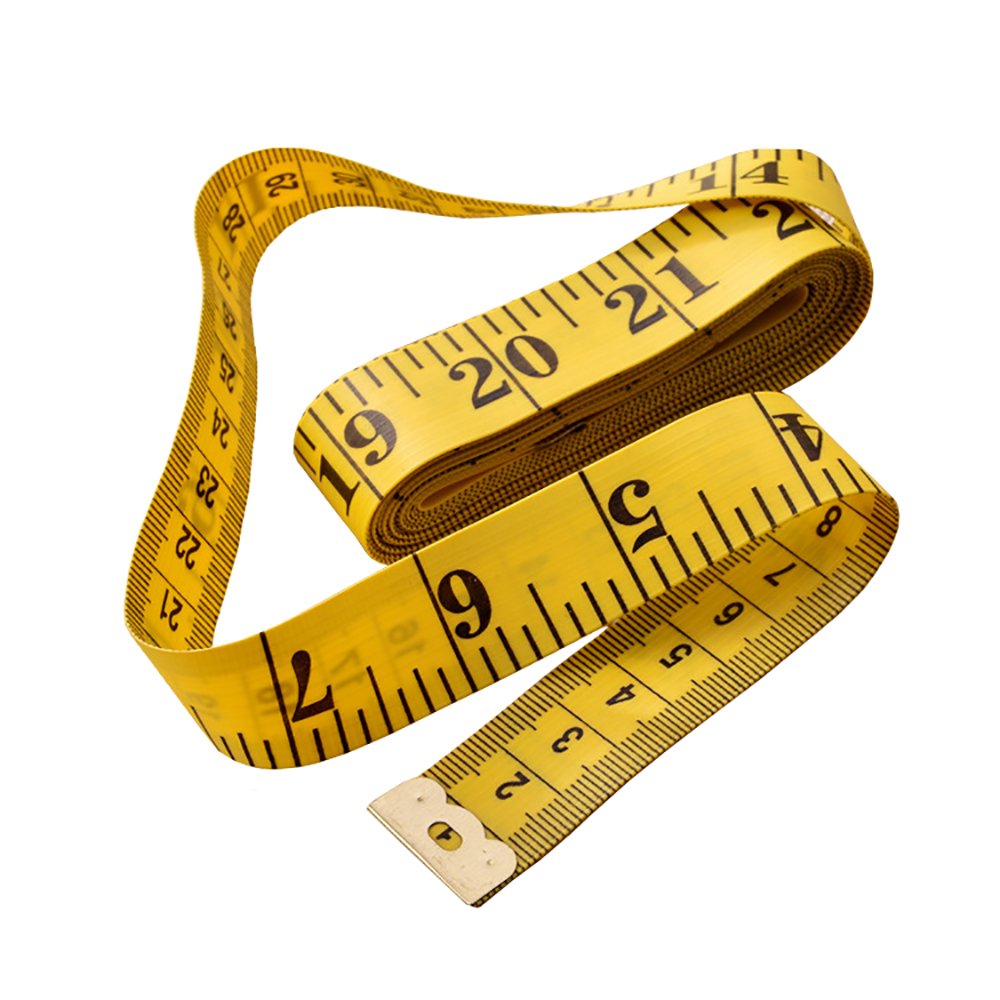 Key Features to Look for in a Tape Measure Sewing
Key Features to Look for in a Tape Measure Sewing
Selecting the right tape measure for sewing involves understanding the features that contribute to its effectiveness in various sewing tasks. Here are some essential features to consider when choosing a sewing tape measure:
Reinforced Ends for Stability
The ends of a tape measure play a significant role in providing stability and accuracy. Many sewing tapes feature reinforced metal or plastic ends that prevent stretching and wear. These reinforced ends allow for precise starting points when measuring around the body or fabric. Additionally, some tape measures come with hooks or loops at the ends, enabling easy attachment and positioning. This reinforcement ensures that the tape stays in place, minimizing slippage and enhancing measurement reliability. A tape measure with reinforced ends is particularly useful for taking consistent measurements, which is crucial for creating well-fitted garments.
Appropriate Length and Size
Choosing the right length for a sewing tape measure is crucial for various projects. Most tape measures for sewing range from 60 centimeters (24 inches) to 150 centimeters (60 inches). A 150-centimeter tape measure is ideal for full-body measurements, accommodating measurements like bust, waist, and hips comfortably. On the other hand, a shorter 60-centimeter tape is suitable for smaller projects such as measuring waistbands, hems, or specific garment parts. Additionally, the compact size of the tape measure ensures it is lightweight and portable, allowing you to carry it easily in your sewing kit or pocket. Selecting the appropriate length based on your specific needs enhances your sewing efficiency and accuracy.
Easy Retract Mechanism
An easy retract mechanism is a valuable feature in a tape measure for sewing. A smooth and efficient retraction system allows you to extend and retract the tape quickly without tangling or getting stuck. This feature is particularly useful when taking multiple measurements in succession, as it saves time and reduces frustration. Look for tape measures with reliable retract mechanisms that ensure the tape returns to the case smoothly after each use. A good retract mechanism enhances the overall usability of the tape measure, making it a more convenient tool in your sewing arsenal.
Locking Mechanism
A locking mechanism is another important feature that adds to the functionality of a tape measure for sewing. This feature allows you to hold the tape in place without continuously gripping it, which is especially useful when taking longer measurements or when precision is essential. By locking the tape at the desired measurement point, you can mark or record the measurement accurately without worrying about the tape moving. This feature enhances measurement reliability and makes the measuring process more efficient, allowing for greater focus on the sewing project itself.
Soft and Comfortable Grip
A soft and comfortable grip on the tape measure’s casing can significantly enhance your sewing experience. A comfortable grip ensures that you can hold the tape measure steadily and take precise measurements without discomfort, even during prolonged use. Look for tape measures with ergonomic designs and soft materials around the grip area to prevent slipping and provide a secure hold. A comfortable grip not only improves ease of use but also contributes to more accurate measurements by allowing you to maintain better control over the tape measure.
How to Use a Tape Measure Sewing Effectively
Understanding the features of a tape measure for sewing is one thing, but knowing how to use it effectively is equally important. Here are some practical tips to ensure accurate measurements for your sewing projects:
Taking Accurate Body Measurements
Accurate body measurements are the foundation of well-fitting garments. To take precise measurements:
- Bust/Chest: Wrap the tape measure around the fullest part of your chest, ensuring it is parallel to the floor.
- Waist: Measure around the natural waistline, keeping the tape snug but not tight.
- Hips: Place the tape measure around the fullest part of the hips, maintaining the same level throughout.
- Inseam: Measure from the crotch to the desired pant length.
Using a flexible, dual-scale tape measure for sewing allows you to capture these measurements accurately, ensuring your garments are tailored to your body shape.
Measuring Fabric Accurately
When working with fabric, precise measurements are essential to avoid wastage and ensure patterns align correctly. Here’s how to measure fabric accurately:
- Lay the Fabric Flat: Ensure the fabric is smooth and free from wrinkles.
- Use the Right Tape Measure: A flexible sewing tape measure can easily follow the fabric’s contours.
- Measure Twice, Cut Once: Double-check your measurements before cutting to prevent errors.
Additionally, clear and durable markings on the tape measure for sewing help maintain accuracy throughout the cutting process.
Marking Precision Points
Marking precise points on your fabric ensures consistency in your sewing projects. Use the tape measure to identify key measurement points, and mark them with chalk or fabric markers. This practice is especially useful when aligning patterns or adding embellishments. A tape measure with clear markings simplifies this process, ensuring that your markings are accurate and easy to follow.
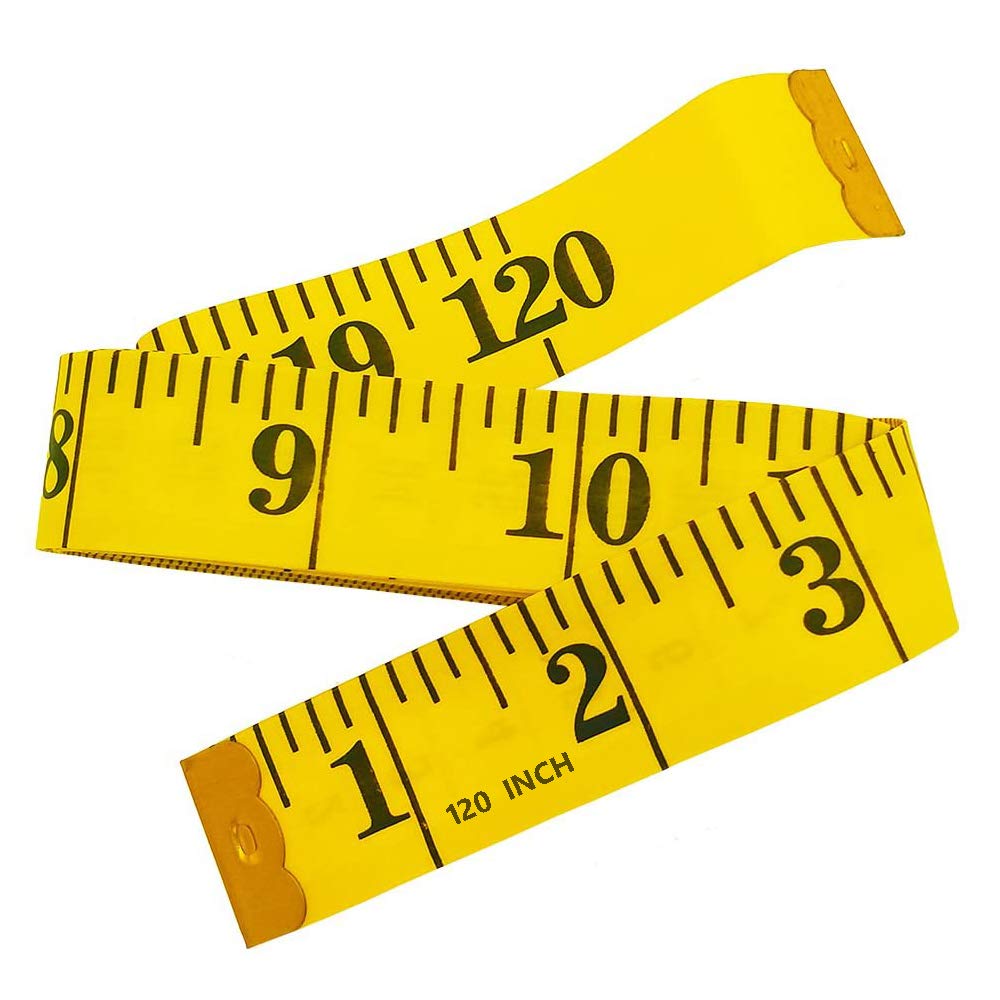 Choosing the Right Tape Measure for Your Sewing Projects
Choosing the Right Tape Measure for Your Sewing Projects
Selecting the appropriate tape measure for sewing requires consideration of various factors to match your specific sewing needs. Here’s what to look for:
Consider Your Project Types
Different sewing projects may require different tape measures. For example:
- Garment Sewing: Requires a longer, flexible tape measure to accommodate full-body measurements.
- Quilting: Benefits from a medium-length tape measure for accurate fabric measurements.
- Embroidery: A shorter tape measure is sufficient for detailed and small-scale projects.
Understanding the types of projects you undertake most frequently will help you choose a tape measure that suits your needs.
Comparing Brands and Models
Several reputable brands offer high-quality tape measures for sewing, each with unique features. Brands like Dritz, Singer, and Clover are popular among seamstresses for their reliability and durability. When comparing different models, consider:
- Material: Fiberglass or fabric tapes are preferred for their flexibility.
- Length: Choose a length that matches your project requirements.
- Dual-Scale: Ensure it includes both inches and centimeters for versatile use.
- Durability: Look for reinforced ends and high-quality markings.
Reading user reviews and professional assessments can provide valuable insights into the performance and durability of various tape measure models.
Budget vs. Quality
While it might be tempting to opt for a cheaper tape measure, investing in a high-quality tape measure for sewing can save you time and frustration in the long run. High-quality tape measures offer greater accuracy, durability, and ease of use. Therefore, balancing your budget with the need for reliability and precision is essential. Often, spending a bit more on a reputable brand ensures that you get a tape measure that will serve you well for years.
Maintaining Your Tape Measure for Long-lasting Performance
Proper maintenance of your tape measure for sewing extends its lifespan and ensures it remains accurate. Here are some maintenance tips:
Cleaning Tips
After each use, especially when dealing with dusty or fibrous fabrics, clean your tape measure to remove any debris. Wipe it gently with a soft, dry cloth. For stubborn stains,
wipe it with a slightly damp cloth, but ensure the tape measure is completely dry before storing it to prevent rust or damage to the markings.
Proper Storage
Store your tape measure in a cool, dry place away from direct sunlight. Excessive heat or moisture can degrade the material and cause the tape to warp or the markings to fade. Using a protective case or holder can also prevent accidental damage and keep the tape measure in optimal condition.
Handling with Care
Handle your tape measure with care to avoid bending or twisting, which can distort measurements. Always retract the tape slowly to prevent snapping back, and avoid pulling it off the spool at sharp angles. Gentle handling ensures that the reinforced ends and flexible material remain intact, preserving the tape measure’s accuracy and functionality.
 Tips for Getting Accurate Measurements with Your Tape Measure Sewing
Tips for Getting Accurate Measurements with Your Tape Measure Sewing
Accuracy in measurements is paramount in sewing, and utilizing your tape measure for sewing effectively can make a significant difference. Here are some tips to enhance your measurement accuracy:
Ensuring the Tape is Straight and Tight
When taking measurements, keep the tape measure straight and taut. Avoid sagging or twisting the tape, as this can lead to inaccurate measurements. For body measurements, pull the tape snugly against the skin without compressing it, ensuring the tape remains parallel to the floor.
Double-Checking Measurements
Always double-check your measurements to confirm their accuracy. Measuring an area twice can help identify any discrepancies and ensure consistency in your projects. This practice is especially important when marking cutting lines or aligning patterns.
Using the Lock Feature
Many sewing tape measures come with a locking feature that allows you to hold the tape in place without continuous gripping. Utilize this feature when measuring long lengths or when precision is essential. The lock ensures the tape remains in the desired position, allowing you to mark or record measurements accurately without the tape moving.
Enhancing Your Sewing Experience with the Right Tape Measure
A tape measure for sewing is more than just a measuring tool; it’s an extension of your creative process. By choosing a tape measure with essential features, using it correctly, and maintaining it properly, you can enhance your sewing experience significantly. Whether you’re designing custom garments, creating intricate quilts, or working on small-scale embroidery, a reliable tape measure ensures that your measurements are precise, your fabric cuts are accurate, and your projects turn out flawlessly.
Embracing Versatility in Your Sewing Projects
A high-quality tape measure for sewing offers versatility, accommodating a wide range of projects. From basic alterations to complex garment constructions, the right tape measure adapts to various measuring needs, providing the flexibility required for different types of sewing tasks. This adaptability not only streamlines your workflow but also empowers you to tackle more ambitious projects with confidence.
Building Confidence Through Accurate Measurements
Accurate measurements build confidence in your sewing abilities. Knowing that your tape measure provides precise readings allows you to focus on the creative aspects of sewing without worrying about measurement errors. This assurance leads to better-fitting garments, more professional-looking projects, and a greater sense of accomplishment in your sewing endeavors.
 Advanced Measurement Techniques
Advanced Measurement Techniques
For those who have mastered the basics, advanced measurement techniques can further enhance your sewing precision and efficiency. Here are some methods to take your measuring skills to the next level:
Measuring Angles and Curves
When dealing with angles and curves, a flexible, soft tape measure is essential. Use the tape to follow the contours of the fabric or body, ensuring that the tape stays aligned with the desired angle. For precise angular measurements, combine your tape measure with tools like protractors or angle rulers to achieve accurate results.
Combining Measurements for Complex Projects
Some sewing projects require combining multiple measurements to achieve the desired result. For example, creating a fitted jacket involves measuring the chest, waist, hips, and sleeve lengths, then combining these measurements to draft a precise pattern. Use your tape measure to take each measurement carefully and record them accurately to ensure that all pattern pieces fit together seamlessly.
Utilizing the Lock Feature for Stability
When working on projects that require extended measurements or multiple markings, utilize the lock feature on your tape measure for sewing. Locking the tape in place allows you to mark or adjust measurements without holding the tape continuously, increasing your efficiency and reducing the risk of measurement errors.
Comparing Different Brands and Models
Choosing the right brand and model of tape measure for sewing can influence your measuring accuracy and overall sewing experience. Here’s a comparison of some of the leading brands and their offerings:
Dritz Sewing Tape Measures
Dritz is a well-known brand in the sewing community, offering high-quality tape measures that are both durable and accurate. Their tape measures typically feature clear, dual-scale markings and reinforced ends for added stability. Dritz tapes are known for their flexibility and ease of use, making them a favorite among both beginners and experienced seamstresses.
Clover Tape Measures
Clover offers a range of tape measures that combine functionality with stylish designs. Their tape measures for sewing are known for their vibrant colors and clear markings, making them easy to read and use. Clover tapes are also lightweight and compact, perfect for carrying around in your sewing kit without adding unnecessary bulk.
Comparing Features and Prices
When comparing different brands, consider factors such as material quality, length, dual-scale markings, reinforced ends, and overall durability. While some brands may offer additional features, it’s essential to balance these with your budget. Investing in a slightly more expensive tape measure from a reputable brand can provide long-term benefits in terms of accuracy and durability, ultimately enhancing your sewing projects.
Creative Uses Beyond Traditional Measuring
A tape measure for sewing isn’t limited to just taking measurements; it can also be a versatile tool in various creative applications. Here are some innovative ways to use your sewing tape measure:
Temporary Straight Rulers
Use your tape measure as a temporary straight ruler for drawing straight lines on fabric. This can be particularly useful when marking cutting lines or drawing design elements. The flexibility of the tape allows you to follow the fabric’s curves while still maintaining straight edges when needed.
Creating Symmetrical Designs
When working on symmetrical designs, a tape measure can help ensure that both sides of your project are identical. Measure and mark key points on one side, then use the tape measure to replicate these measurements on the other side, maintaining perfect symmetry.
Planning Widget Layouts
In more complex sewing projects, such as designing garments with multiple layers or intricate details, use the tape measure to plan and layout each component. Accurate measurements help in aligning patterns and ensuring that each layer fits together seamlessly.
Measuring Fabric Shrinkage
Before cutting fabrics, measure their shrinkage rate using your tape measure. Wash a small sample of the fabric, then measure it again to determine how much it shrinks. This information is crucial for adjusting your pattern measurements to account for any changes in fabric size during the sewing process.
 Conclusion
Conclusion
Choosing the right tape measure for sewing is fundamental to achieving precision and excellence in your sewing projects. By understanding the essential features—such as flexibility, dual-scale markings, clear and durable markings, reinforced ends, and appropriate length—you ensure that your measurements are accurate and reliable. Additionally, maintaining your tape measure through proper cleaning, storage, and careful handling preserves its functionality and longevity.
